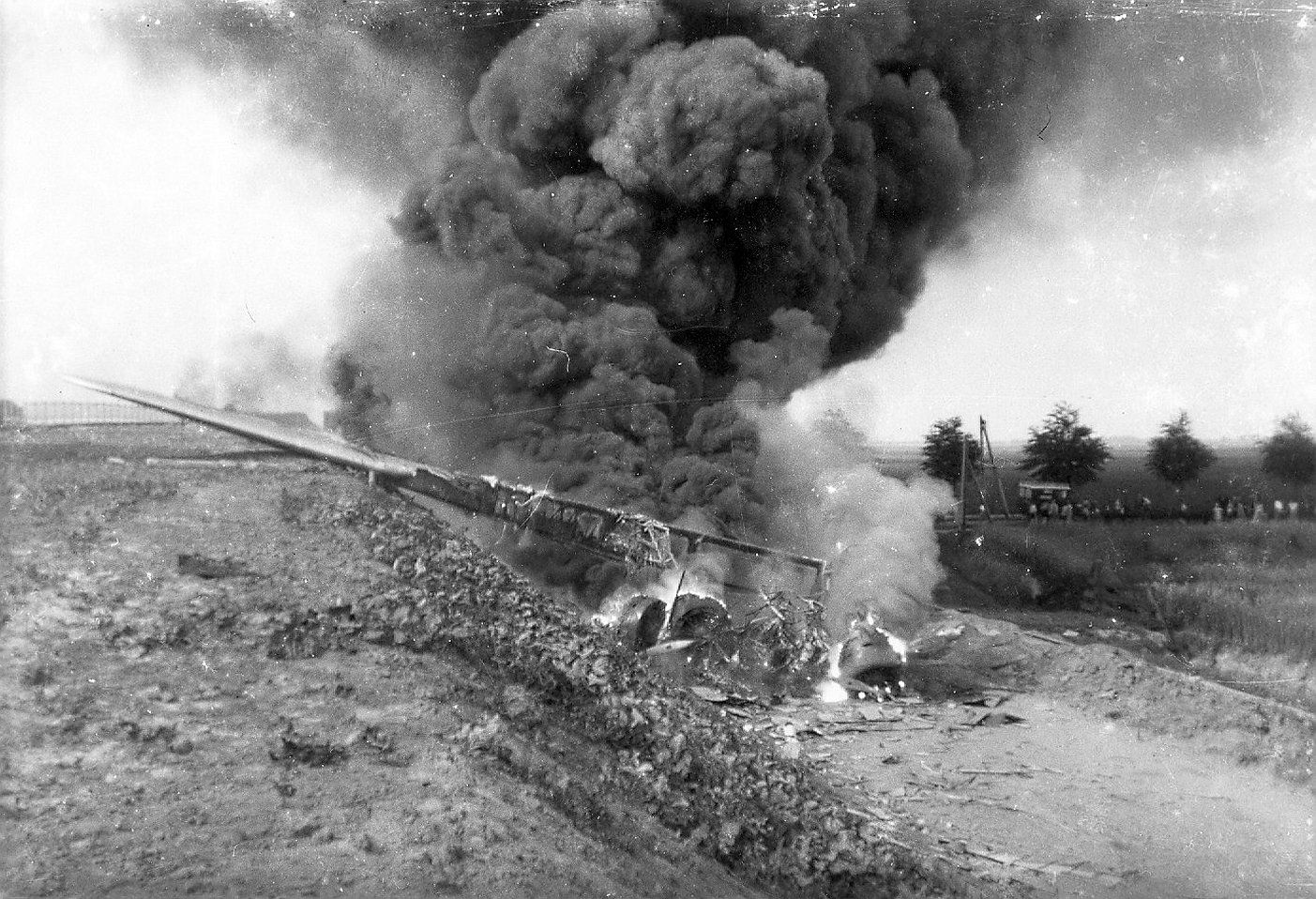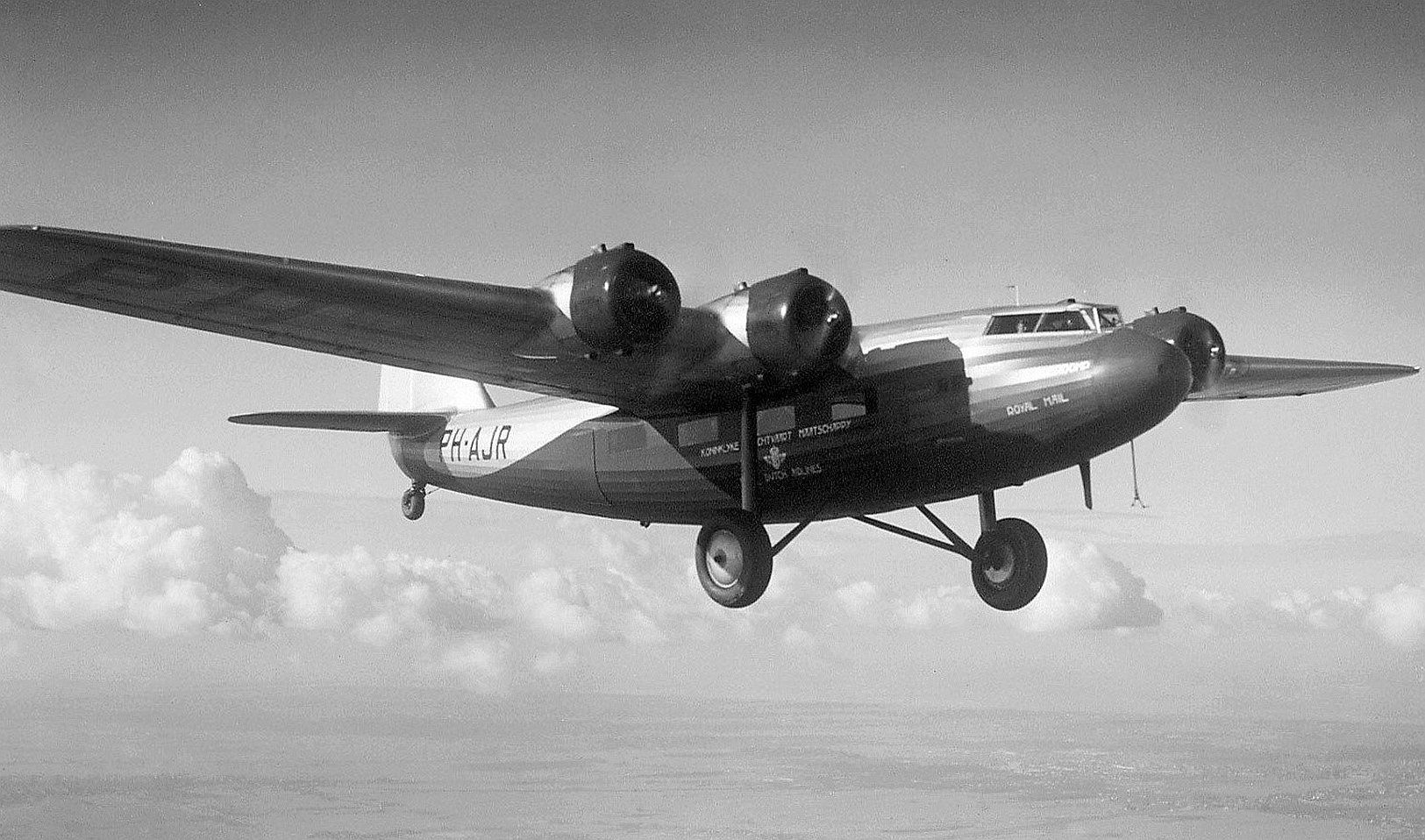Fokker F.XXII
Developed as a smaller version of the previously built Fokker F.XXXVI, the F.XXII was built in 1934 and made its maiden flight in 1935. It became the last model to be built by Fokker prior to the second World War.
The aircraft accommodated 22 passengers and was equipped with a fixed landing gear and four 500 hp Pratt & Whitney Wasp T1D1 engines which were mounted into the wing’s leading edge. The fuselage shape was elliptical and similar as the previous F.XX. The cabin was very luxuriously furnished with leather seats and folding tables in between. Perfect for eating the meals on board. The layout of the cockpit was very much different from the usual concept. In the F.XXII, the captain's seat was located entirely in the front, centered in the fuselage nose. The co-pilot’s seat was diagonally to the right behind him, the radio operator sat to the left of the co-pilot, slightly lower. This unusual configuration can be seen in photo No.10 here below. The fourth crew member, the steward, had an on-board kitchen, which was located behind the cockpit.
Sweden's ABA was interested in such an aircraft. However, at Fokker, a single buyer for the new type was not considered enough and therefore they tried to interest Albert Plesman in the design. An additional argument to convince Plesman was his cooperation with the Swedish ABA in which KLM cooperated intensively on some European routes. Plesman immediately ordered two, and later on, an additional third aircraft. ABA remained with one aircraft. Two of KLM’s F.XXII aircraft went to the British Royal Air Force in 1941 and were assigned to the Air Observers Navigation School and served as flying classrooms for training navigators in the RAF.
Click on the photo to enlarge the photo














